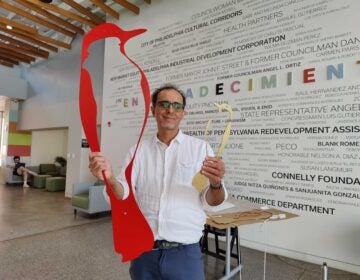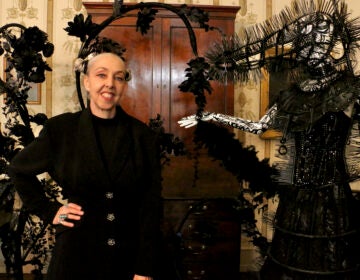A Puerto Rican frog comes to North Philly: The coquí sing in El Centro del Oro
A sound installation along 5th Street evokes the nighttime chorus of coquí frogs.
Listen 1:29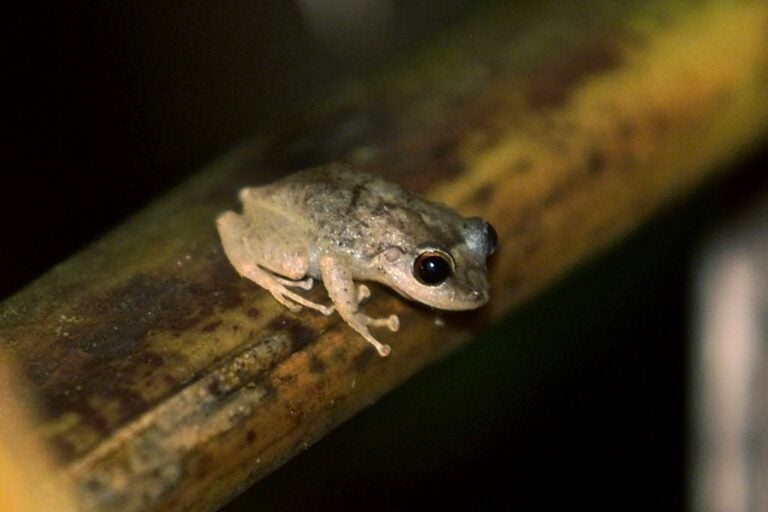
A coquí frog sits on a tree branch in El Yunque rainforest in Caimito, Puerto Rico. The tiny frog is named coqui after its distinctive two-note call of "ko-KEE, ko-KEE," and has become a symbol for the island, its culture and its people. (AP Photo/Gerald Lopez, file)
The metal palm trees sprouting from the sidewalk of El Centro del Oro, the Latino section of North Philadelphia around 5th Street and Lehigh Avenue, are chirping with the sound of the coquí. The distinctive call of the tiny Caribbean frog competes with the din of heavy traffic, quietly evoking the signature sound of Puerto Rico.
The coquí is about the size of your thumbnail and dominates the nighttime soundscape of Puerto Rico. The frog is endemic to the island – found nowhere more plentifully – and has become its cultural symbol, from ancient rock carvings by the native Taíno people, to dance music, to modern kitsch.
“The coquí is a very small frog and it produces a very loud sound,” said Raúl Romero, the artist who created the sound work. “Puerto Rico is a pretty small island with a lot of people connected to it. As individuals we may be small, but as a collective can be very loud.”
Romero, who teaches at the University of the Arts, grew up in Florida and visited Puerto Rico often to see his grandparents in rural parts of the island. To make this sound installation, “Onomonopoetics of a Puerto Rican Landscape,” he returned into the island’s mountainous interior around Utuado with recording equipment, coming back with hours of coquí sound.
“It’s kind of like witnessing a 360 degree chorus of sound. Completely immersive,” he said. “You’ll hear one coquí start to sing, and then another one will join in. After a few calls they all pick up as if there is a crescendo.”
The sound installation is both outside in the street and inside Taller Puertorriqueno, the Latino cultural center on 5th Street in El Centro del Oro. Taller Puertorriqueno is hosting the Philadelphia iteration of “Onomonopoetics,” which is simultaneously installed in Miami.
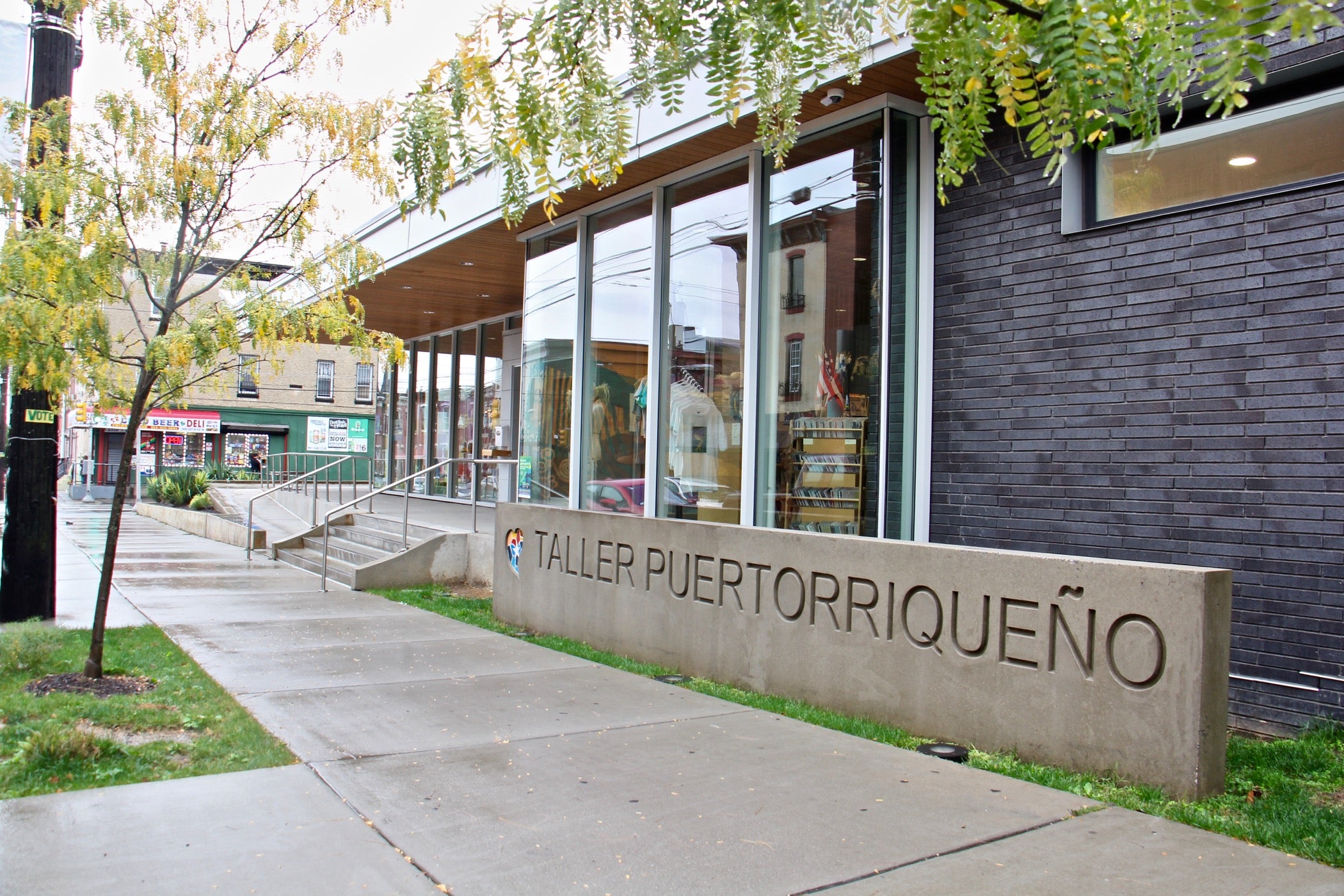
The coquí is named after the distinctive sound it makes, co-KEY, as the males signal to the females for mating. There are about 17 different varieties of coquí in Puerto Rico but only two of them make that commanding biphasic (two-phased) sound. Other frogs and insects emit other sounds that contribute to the island’s nighttime chorus.
“One of the reasons I am there is because of that sound. I love that sound in the night,” said composer Alfonso Fuentes, in an interview in 2018, about finding musical inspiration from the coquí.
After Hurricane Maria devastated Puerto Rico in 2017, Fuentes saw that the island’s forests had been stripped bare by the storm. Without forests, there are no coquí. Fuentes wrote “Ode to Fallen Trees” in part about the eerie silence that Maria left behind.
Romero wants his “Onomonopoetics” to help residents of El Centro del Oro reconnect with Puerto Rico. The show’s website has an interactive feature, asking people to describe how they reconnect with Puerto Rico. Users can make audio recordings of themselves and upload them to the site.
“The chirps of this tiny frog lulled me to sleep as a child after a cool night of rain,” said Mars Soto, of Miami. “I always keep my ear to the window, waiting for my coquí to sing me to sleep.”
From a scientific perspective, the sound of the coquí conveys much more than nostalgia. The mating call communicates the health of the male frog and communicates information about the suitability of his habitat for laying eggs. The females have evolved to shut out all other competing sounds and focus on that call.
“Each frog has its own unique call, just like WHYY has its own frequency, and females have specialized cells in their ears that are fine-tuned to that unique channel,” said Dr. Carlos Martinez Rivera, an amphibian biologist at the Philadelphia Zoo, with whom Romero consulted for the project. “They have their own private channel.”
Rivera showed Romero how to analyze the sound of the coquí with computer software that breaks down forest sounds into discrete frequencies and maps them into color fields.
“It’s like looking at a heat map mixed with sound waves,” said Romero “I can alter the colors used to identify different ranges of sound. By changing the color palette, some of these recording samples had the feel of the landscape, like tall grasses.”
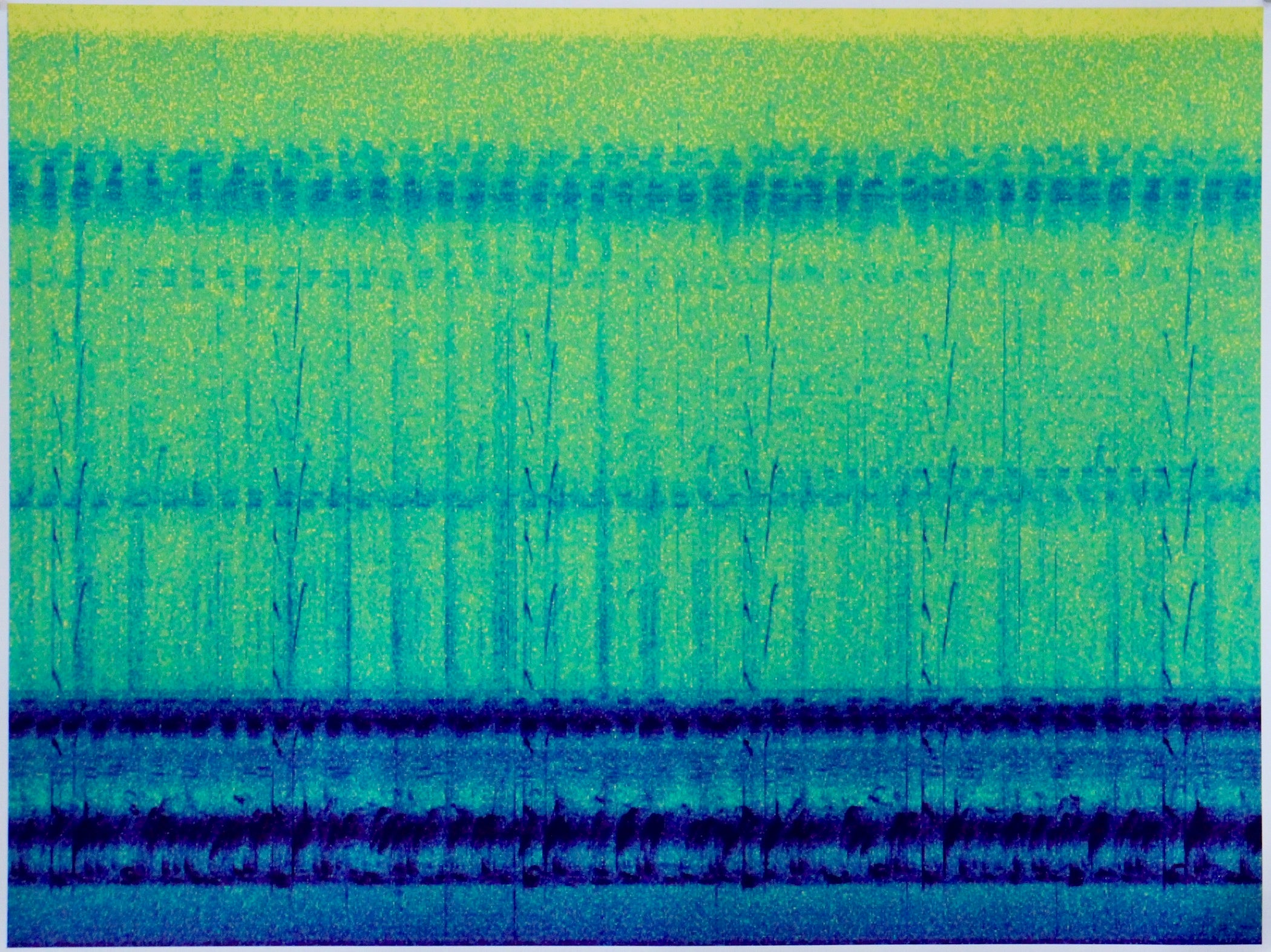
Those maps give “Onomonopoetics” a visual dimension. Romero hung some of those sound maps in the Taller Puertorriqueno atrium. He also created sculptures using abstracted elements of Puerto Rico, such as a large copper disc on top echoing the radio telescope dish of the giant Arecibo space observatory.
For Romero, the sound of the coquí is less of a scientific endeavor and more of a connection to his cultural identity. After standing on a mountainside enveloped by the sound, he said it never left.
“The sound resonates in the ear, even after,” he said. “When I arrived back to Philadelphia I would still hear the sound, like it was an earworm.”

Get daily updates from WHYY News!
WHYY is your source for fact-based, in-depth journalism and information. As a nonprofit organization, we rely on financial support from readers like you. Please give today.



